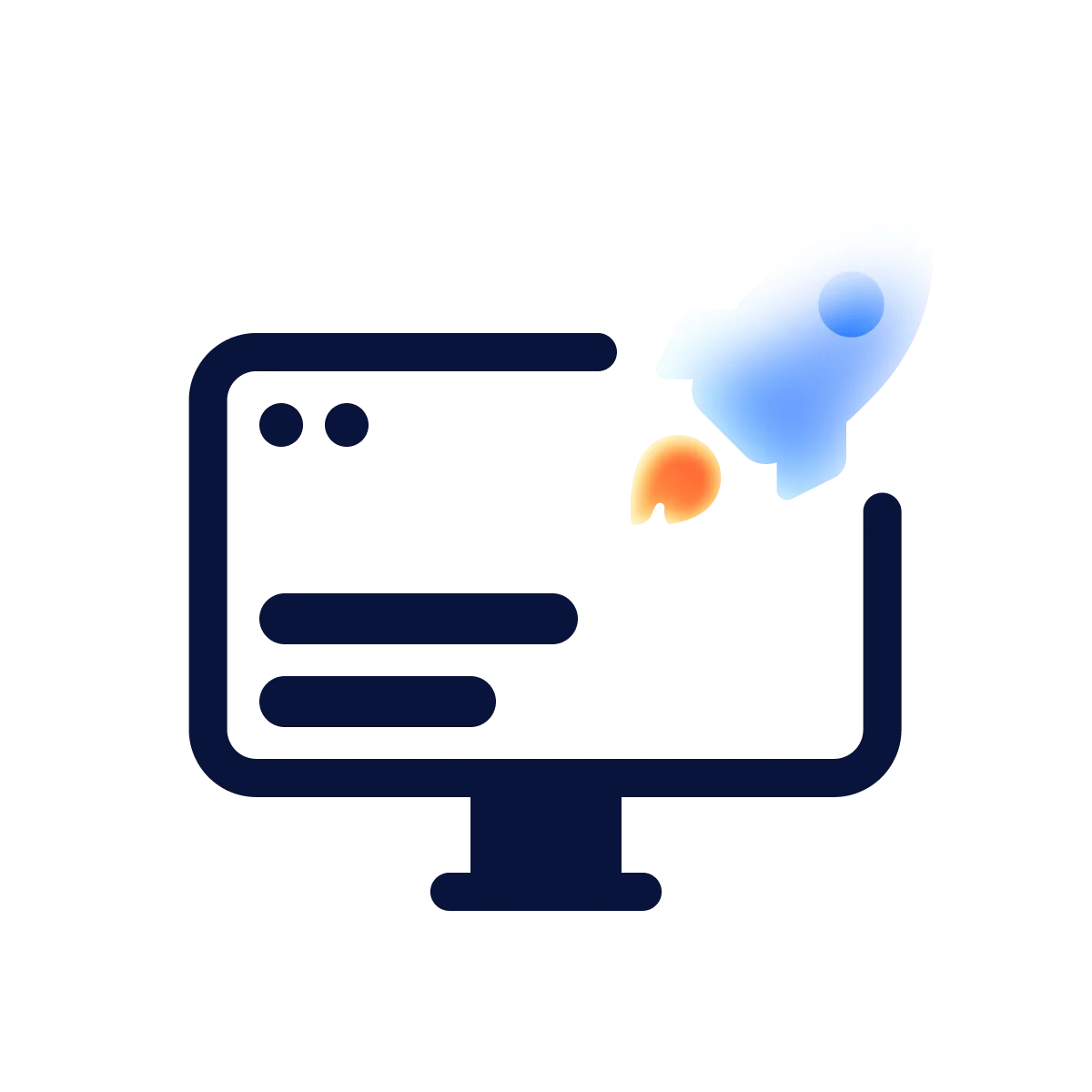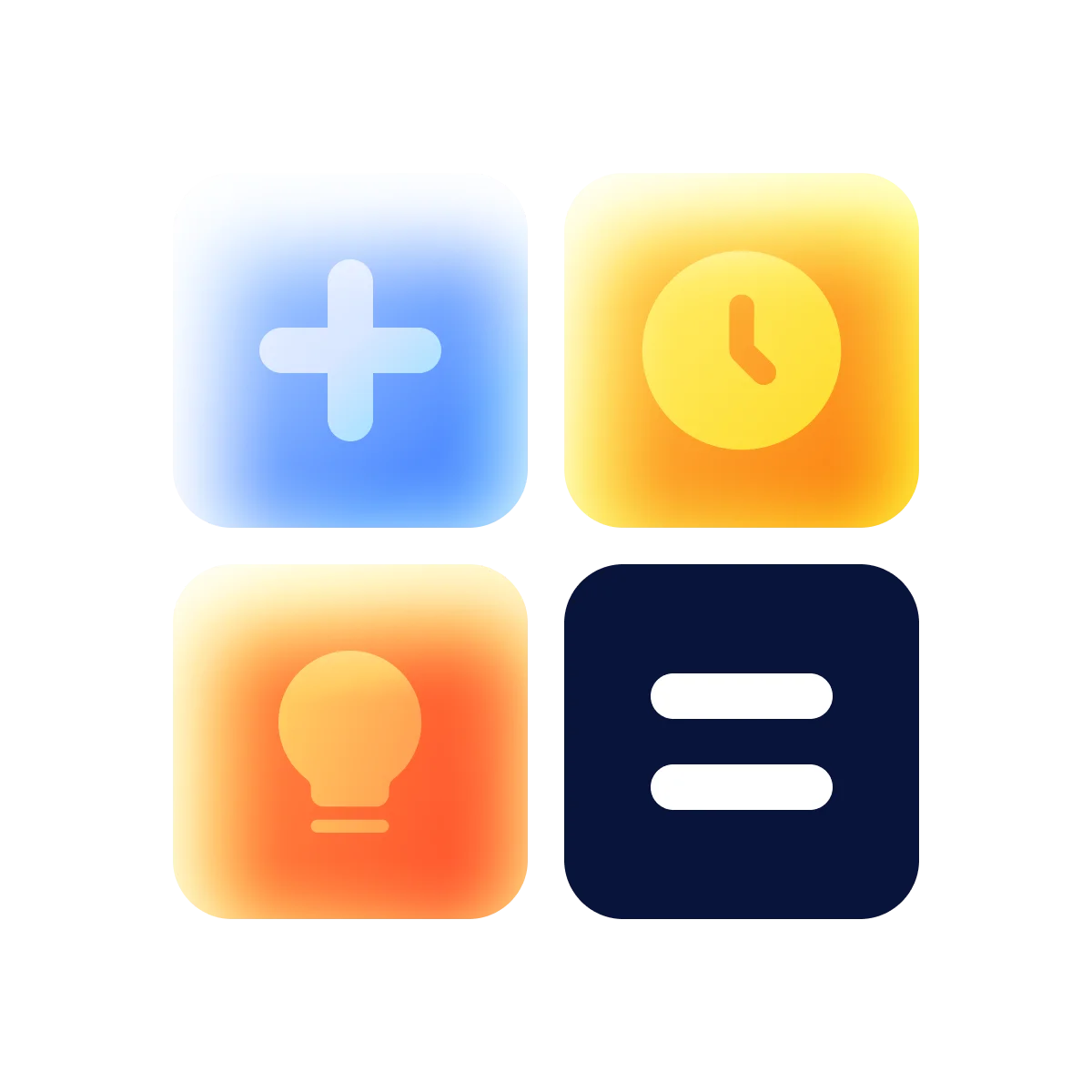So, you’ve got a great idea for an app, and you’re looking for ways to make it come true. Or, perhaps, you’re running an offline business and want to get a competitive edge by digitalizing it. Even more, you may already have an app and just want to make it up-to-date.
Where should you start? When you build a home, you begin with a foundation. The same goes for the web apps — you choose the tech stack. Choose wisely! Remember The Three Little Pigs tale? Only one of them chose the right materials (read: the best tech stack) for his house. The others didn’t stand the competition, speaking in market terms.
First things first. Start with analyzing what might be right for your product. Choosing the best technology stack for web applications will help you build a stable and efficient solution. A pleasant bonus to it – you’ll avoid unwanted fixing costs in the future. Nobody wants to pay extra, right?
Let’s dive deeper into the topic of the technology stack for web applications and its importance. You’ll see some popular programs that most companies in the world use. We promise you’ll have less trouble choosing different web stack technologies for your project. Moreover, you will see the structure of the technology stack of successful web applications. Off we go!
Whаt is technology stack for web application development?
The technology stack for web applications is the same as what construction materials are to a building. Technology Stack is a set of programming languages, frameworks, and other tools for the development and operation of various types of web applications:
- Q&A Forums (Reddit)
- eCommerce Platform (Amazon)
- Collaboration Tools (Slack)
- Social Media Network (Facebook)
- Learning Platform (Coursera)
Web apps consist of two software parts: client-side and server-side. They are also called front-end and back-end. Simply put, the front-end is about everything you see on your browser’s page. For instance, buttons, animations, pictures, colors, etc. The back-end is what you don’t see. Still, it ensures that your requests will be processed properly. It goes about the data stored on a server so that people can access it from any device.
Let’s take a simple weather app. You can see animated sun, rain or clouds, pleasant-to-read fonts, and background color that changes depending on the temperature. That’s the front-end. The data to show current weather (e.g., temperature, precipitation, pressure) is pulled from the back-end.
Both sides should work in harmony, creating a technology stack for web applications. You won’t expect a rock band to perform with a jazz orchestra, right? They may play together but it would sound weird. Same with the tech stack — choose the proper combination to get the best solution.
The popularity of web applications explains the positions of HTML/CSS and JavaScript in the ranking of the most commonly used programming languages. They work in every browser and are the core of the front-end tech stack. What about the back-end? The situation is different with many options each having its pros and cons.

Let's take a closer look at the both sides of the technology stack for web development.
Front-end tech stack
First we will talk about the front-end. Let’s remind you that it represents the visual part of the product — that is, what your users see. The front-end uses such tools as HTML, CSS, and JavaScript. Based on them, developers can build frameworks that create an interface much faster. Sounds like some kind of magic? Somehow it is.
What is cool about the frameworks?
- It's a list of concepts and guidelines. Following them, developers write reliable code that is easy to understand and maintain.
- Frameworks greatly simplify the developers’ work — they do not need to write all the code from scratch.
- The solutions fit into industry standards: it is easier to find specialists to support them later.
Customers are demanding more and more in terms of web applications quality and usability. It pushes the ecosystem of frameworks to improve further. Current ‘ratings’ are more or less relative. Still, they show the most used ones, like this chart below created by the State of JS.

However, not all frameworks serve the same purpose. For instance, the main one for the front-end tech stack is usually VueJS, React, or Angular. Jquery, in turn, is often used for adding some effects or adjusting the interface.
Now let’s have a closer look at these guys creating the ‘face’ of web applications.
HTML and CSS
These two are responsible for what you’ll see on the webpage.
HTML (Hypertext Markup Language) instructs the browser on displaying the information structure of your web application. Front-end developers use HTML to define such things as font type, color, graphics, and hyperlink effects. Basically, HTML is a key building block for a site.
CSS (Cascading Style Sheets) is a language that describes how a document written in HTML will be displayed on users' screens. This technology determines the display style of data, such as the fonts, size, colors, and other static elements of the front-end.
Developers use a variety of tools to speed up their work when working with HTML and CSS. For instance, JSX. It allows engineers to write HTML code right within JavaScript. Another one is PostCSS using JS-based plugins to simplify typical CSS operations. And here, we get closer to JavaScript itself and its frameworks.
Front-end frameworks
Today, JavaScript is almost an omnipotent tool powering everything from web animations to your smart home devices. For our purpose, we’ll focus on how JS can make our front-end dynamic.
In other words, HTML and CSS is the beautiful design of a car. Still, you need an engine to drive somewhere. Here’s where JS comes into play. JavaScript makes web application pages interactive and intuitive for users. One of the important features of JavaScript is using this language to create both the client-side and the server-side.
We will now look in more detail at front-end frameworks that help to develop a solution quickly. Developers are already working with ready-made structures to create the interface of your product.
ReactJS
Facebook developed this front-end library to have a reliable way to build single-page applications. Engineers appreciate React since it divides the whole interface into components they can reuse across the entire app.
Why good?
- Simple to use and employ
- Easier development of dynamic web apps
- Reusable UI components helping to maintain and develop apps
Companies like Bloomberg, Meta (ex-Facebook), Instagram, Skype, Pinterest use ReactJS.
VueJS
It’s an open-source progressive JavaScript framework for creating single-page applications and user interfaces. It is not backed by industry giants (read: FAANG), yet it is a more than decent framework with a solid base of supporters.
Why good?
- It is flexible and can be used as a library or a full-featured framework
- Light-weighted and easy to integrate
- Code reusability
Companies like Netflix, Xiaomi, Adobe, Grammarly, Apple use VueJS.
Angular
Google developed this framework to create a dynamic structure of web applications. Developers use this technology for building single-page applications.
Why good?
- It helps shorten the development time
- Several features allow creating dynamic and rich content
- Lots of reusable components, simplicity of testing
Companies like Microsoft (MS Office), Google (Gmail), Forbes, UpWork, PayPal, Samsung use AngularJS for their products.
Back-end tech stack
Now let’s look under the hood — that’s where the back-end lies. It is a server-side of an app, not visible to your customers. However, it affects the interaction of users with the product and controls the smooth operation of the application. To define the tech stack for the back-end you’ll need to choose programming languages, infrastructure (servers), and databases.
Choosing the best stack for web development can’t happen without selecting the proper back-end options. So, what are the alternatives?
Programming languages and frameworks
There are plenty of web application technologies such as programs and frameworks based on them in 2021. Here’s a quick overview of several popular ones, their pros and cons.
Node JS
Node.js is our old friend JavaScript. Or, more correctly, it is an environment enabling JS execution on the server-side. Its popularity can be explained by Node.js potential to develop real-time network applications. It is open-source and easily accessible. Engineers praise Node.js for web app development since it is straightforward, cost-effective, and efficient.
Why good?
- Easy to scale
- High performance in real-time apps
- Lightweight and allowing for the speedy web development process
PHP (Laravel)
PHP is a server-side scripting language to develop web applications. This technology can be embedded in HTML, and it has several significant advantages. PHP is easy to use for both beginners and has enough advanced features for the professional.
Laravel is an open-source PHP web framework for the development of web apps following the model – view – controller (MVC) architectural pattern. The developers use this technology to facilitate the following common tasks: authentication, routing, sessions, and caching.
Why good?
- Popular, credible, and flexible
- Platform-independent and user-friendly
- Server-ready, saving time and allowing engineers to focus on performance
Companies like Pfizer, BBC, MasterCard, Deloitte use Laravel.
Python (Django)
Python is a back-end programming language developers use to automate tasks, analyze data, and create websites and software. This technology is great for writing clear code for both small and large projects. This versatility helps Python to remain a popular option when creating web applications for professionals of different levels of expertise.
Django is a leading framework for the server-side based on Python. IT companies create complex and multifunctional web applications with this technology. Django is easy to use, has an optimal level of safety and high scalability. Moreover, this framework can be used for a wide range of web applications.
Why good?
- Fast processing and rapid development
- Flexibility and scalability
- Made by web developers for web developers
Companies like Instagram, National Geographic, Mozilla, Spotify, Pinterest use Django.
[fs-toc-omit]Database
Now that we’ve got the looks and the engine of a web app up and running, let’s get to the data. It can be anything, for instance, texts, numbers, photos, videos, images, web pages, documents, etc.
To get and use data, you need to store it somewhere. And this place is a database, a component of the server-side. You’ll also need it if you plan that your web application will ask users to leave their data.

According to DB-Engines Ranking, as of May 2021, the most popular database management system (DBMS) in the world was Oracle; MySQL and Microsoft SQL Server rounded out the top three. Let’s look closer at those popular for web applications.
MySQL
It’s a database management system developed by Oracle. Engineers choose this one because it is easier to learn than other databases like Oracle Autonomous Database and Microsoft SQL.
Another advantage of MySQL is the ability to run on UNIX, Linux, Windows, etc., platforms. Moreover, this system is fast, reliable, and scalable.
Companies like Uber, Netflix, Pinterest, Shopify, Amazon, Twitter use MySQL.
PostgreSQL
This one was developed by Michael Ralph Stonebraker in 1996 and has grown in popularity ever since. Devs like it due to its compatibility with widespread operating systems – Windows, Linux, macOS, Unix, etc.
Nowadays, PostgreSQL is among the most used databases. It offers reliability and data integrity while dealing with data. Several businesses opt for PostgreSQL since it uses various data types and comes with a solid set of features.
Spotify, Twitch, Instagram, and many other big names include PostgreSQL in their stacks.
MongoDB
MongoDB is often used to store high-volume data. The project was started in 2007 by Dwight Merriman, Eliot Horowitz, and Kevin Ryan. It is appreciated for its scalability and flexibility.
Web app developers can enjoy several out-of-the-box capabilities presented in MongoDB. Moreover, it comes in handy when you need to create an application fast.
Among MongoDB adopters, there are Lyft, Adobe, Forbes, Amazon, and plenty of others.
Factors to consider when choosing a tech stack
Of course, you want to choose the best stack for web development. Above, we’ve covered the ‘hard’ part concerning the technologies themselves. Now, let’s discuss other important factors to make a wise decision. They can also help should you opt for outsourcing your project to a software development company.
1. Project Size and Requirements
In this case, size does matter. The project’s scale affects the set of technologies you need for your web application. Obviously, the larger the project, the more complex it will be for the client and server side. However, even a large one can look and work as fast and high quality as a small one.
2. Development Cost
Money may be the root of all evil but they make lots of things happen. Web applications are no exception. Keep in mind that you need to allocate a budget to the development team for your product. Each project requires different tech stacks and, thus, different specialists.
Certain technology stacks may be pricier than others — in-demand ones usually have higher developers rates. You can get a rough estimation of the project’s price by multiplying the rates by the time to market. For instance, a very simple single-page app can take 8-10 hours to develop. If the engineer’s hourly rate is $50, the cost will be $400-500.
However, stay aware that the app needs technical support after the launch, not to mention the updates. These will affect your budget too.
3. Time to Market
Timing means a lot. Even a brilliant idea may fail if it comes at the wrong time. So, set a specific release date. This way everyone onboard can understand how much time they have to develop. It will also help you manage the team and your money.
These tips may help you set the timeframe in a smart way:
- Create a minimum viable product (MVP), which will have several important functions. This is a ready-made solution that you can quickly launch and test. If the web application is successful, then you can make a full version of your project.
- Use popular technologies. It will help to find the right developers quickly. Moreover, there is a lot of information on the Internet about such programs, which also simplifies the process of learning and developing your product.
4. Scalability
There is no shame in dreaming big. You can start with a small app and build on its success. A growing userbase means you need to think about the scalability of your app. It’s better to do it from the very beginning not to face troubles in the future. Think about how your product will withstand the load after adding new features or increasing the number of people on the site.
There are two options for scaling a web project:
- Vertical, when you add software for new tasks
- Horizontal, when you add more processing units or physical machines to your database/server
The smart way would be to think of both in advance. Readiness to scale horizontally and vertically can safeguard your app from crashing when the (un)expected success comes.
Tech stacks of our successful projects
We at Halo Lab have solid experience in developing quality web applications in various areas of business. Our developers select high-quality technology stacks that meet the requirements of the IT market. We offer you to get acquainted with several of our successful projects.

Raven.GG
This is an online store for gamers with a personal account, payments, custom goods, and attributes, where you can:
- Buy clothes
- Order a custom design from a designer
- Assemble the design yourself
- Start selling your designs and get a commission for it
Tech stack:
- ReactJS (front-end)
- ThreeJS (front-end). It’s a library in JavaScript allowing developers to manipulate 3D objects directly in the browser

Bücherregister.de
It’s a platform for book lovers and collectors from all over the world. Here they can register their collection of books in a digitized list format to inspire others.
Tech stack:
- ReactJS + NextJS (front-end). It’s a JavaScript framework that helps developers to create fast and user-friendly static websites and web applications
- StrapiCMS and MongoDB: CMS and database letting users to save the data and manipulate with it.

Secure Privacy
It is a service that helps companies worldwide to streamline their data protection compliance obligations in one place. Secure Privacy offers solutions that help its customers comply with cookie laws.
Tech stack:
- ReactJS (front-end)
- GatsbyJS (front-end). It’s an open-source front-end framework based on JavaScript for creating dynamic, optimized websites and a cloud platform
.webp)
[fs-toc-omit]Choose the right tech stack for your project with Halo Lab
The technology stack consists of a set of programs for the front-end and back-end that can help you implement your project. Choosing the right components is a difficult process, as there are many on the market today. Therefore, you need to understand for which products you can apply each technology.
You need to consider several factors when looking for the best technology stack for web application: project size, requirements, development cost, scalability, time to market, and security. Moreover, you can find popular products that are similar to your idea and analyze their technology stacks. However, you can entrust this whole process to professionals.
We at Halo Lab know how to choose a technology stack for web application development, as our developers have solid expertise in this area. What's more, our dedicated team can help you create your project from scratch to suit your business needs.
Contact us, and we will help you with the technology stack and web application development.
in your mind?
Let’s communicate.





























